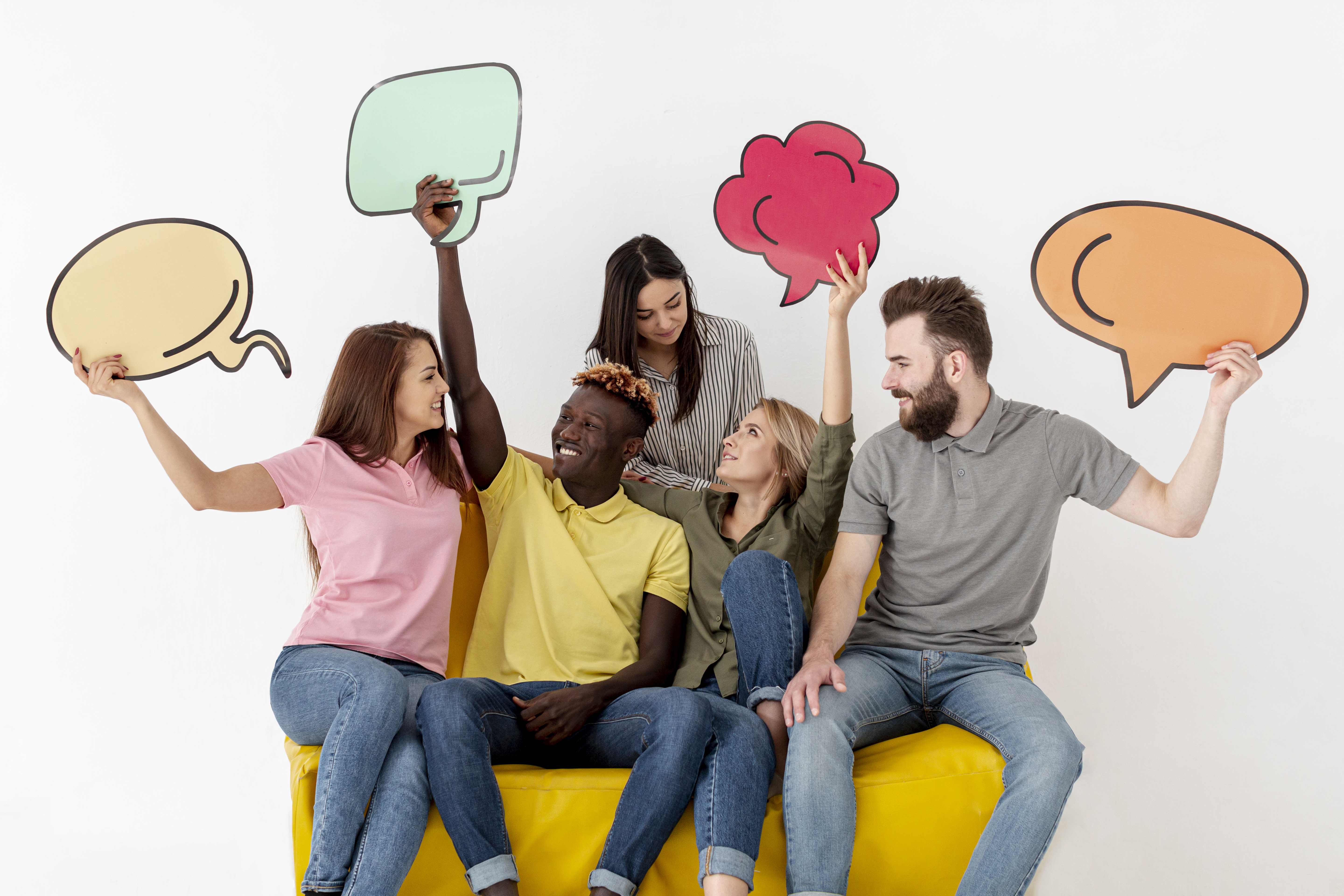Language is a powerful communication tool and a fundamental pillar of socialization. Through words, we build realities, forge identities, and transmit values. In this context, inclusive language emerges as a response to the need to create a more equitable society that embraces diversity. This movement seeks to avoid exclusion and discrimination, promoting communication that reflects and respects society’s plurality and equality.
The importance of inclusive language
Using inclusive language when we speak is crucial today, especially in an increasingly globalized and diverse world. Organizations, both public and private, communicate with a wide and varied audience, making it essential that their messages are conveyed with sensitivity to avoid excluding or offending any group. Using language that respects all identities and realities is not only a matter of social justice, but also an effective strategy to reach a broader and more diverse audience.
Non-inclusive content can have negative consequences for a company: from losing customers to damaging brand reputation on social media. By using language correctly and ethically, we can avoid legal, social and business issues.
DEI and new business values
Developing a DEI policy that encompasses different languages and cultures poses a major challenge. The acronym DEI stands for Diversity, Equity and Inclusion, referring to the strategies and practices that a company uses to conduct its activities in an equitable manner, implementing diversity and inclusion programs. These days, one shortcomings faced by some companies within their work teams their failure to implement best practices for the inclusion of diverse or vulnerable groups. This is absolutely one of the challenges that companies must overcome.
Each language and cultural context has its own characteristics and nuances that must be taken into account to ensure that inclusive messaging is effective and appropriate. Within a company, there may be employees who possess an innate ability to think diversely, which enables them to conduct critical and objective analyses of society. Along these lines, fostering equity in the workplace empowers employees to share their critical thoughts and the valuable insights their perspectives can provide, nurturing trust, dialogue, and collaboration among team members. In addition, to effectively implement inclusion (as the last component of the DEI) in an organization, it is crucial to select employees without considering aspects like appearance, affiliation with a specific social group, ethnicity, sexuality, or social class.
Companies must be willing to carry out these practices through dialogue and respect, as everyone is important and everyone has a part to play.
Challenges of inclusive language at a global level
Linguistics
Languages vary in their structure and use of gender. For example, in languages such as Spanish, French or German, nouns have gender, which can make translating inclusive content difficult. In Japanese, on the other hand, although nouns are not assigned genders, there are terms and constructions that have historically been associated with a specific gender. Translators and linguists must be trained and equipped with style guides that enable them to navigate these limitations and adapt content in an inclusive manner without losing the original meaning.
Cultural requirements
Expectations about inclusion vary considerably across different regions and cultures. What may be accepted and valued in one context may be rejected or ridiculed in another.. For example, approaches to inclusive language may differ between Spanish-speaking countries such as Argentina and Spain, or between French-speakers in Canada and France.
Political influences
The local government’s stance on inclusion also impacts how inclusive language should be addressed. In some countries, there are regulations that promote inclusive language, while in others, there may be political resistance to these initiatives. Institutions such as the Royal Spanish Academy (RAE) or the Académie Française can also play a decisive role in defining and limiting the use of inclusive language.
Personal biases
Conscious and unconscious biases of individuals also affect the implementation of inclusive language. Education, cultural heritage and personal experiences shape our perception and use of language.. It is essential for content creators and linguists to be aware of these biases and actively work to mitigate them, ensuring their work reflects true inclusion.
Strategies for inclusive language
Adopting inclusive language requires a deliberate and conscious approach. Here are some key strategies to achieve it:
Use of generic and collective nouns
Instead of using gender-specific terms, non-gender-specific nouns such as “person” “member”, or “participant” could be used. To refer to groups, collective nouns such as “citizens”, “staff” or “team” can be used. These alternatives avoid exclusion and make the language more inclusive.
Non-exclusive grammatical structures
The use of impersonal or passive structures, as well as the use of imperatives, can help to avoid excessive masculinization of the language. For example, in Spanish instead of saying “Los interesados [masculine plural noun] pueden enviar su currículum” (“interested parties may submit their resumes”) you could say “Envíen su [gender-neutral pronoun] currículum” (“please submit data subjectyour resume”). We can also use impersonal, passive constructions. For example, in Spanish you might say “Se debe rellenar el formulario” (“the form must be filled in”), rather than “El usuario [masculine noun] debe rellenar el formulario” (“the user must fill in the form”). Another common example is “Os [gender-neutral pronoun] damos la bienvenida” (“we welcome you”) rather than “Bienvenidos [masculine]” or “Bienvenidas [feminine]” (“welcome”).
Gender splitting
Splitting, although it can be criticized for wordiness, can be a useful strategy in certain contexts. For example, using “los y las estudiantes” (“male and female students”) or “los/las estudiantes” (“male/female students”) can help make both men and women visible. However, it is important to use this technique sparingly to avoid the text becoming dense and repetitive.
Training and style guides
Providing ongoing training and style guides to content creators and translators is essential. These tools should include inclusive terminology and practical examples to facilitate their application in different contexts. Additionally, it is helpful to have a diverse team that can offer different perspectives and ensure that the language used is truly inclusive.
Consultation and feedback
Consulting with the community and receiving constant feedback is vital to improving and adjusting DEI policies. People living and working in each target market have valuable knowledge about inclusive language in their local context. Their input can help identify problematic terms and develop inclusive alternatives that are culturally appropriate.
In short, inclusive language is not just a passing trend, but a pressing need in today’s society. Adopting it requires effort, awareness, and a genuine willingness to promote equality and respect for all people. Organizations have a responsibility to lead this change, not only as a matter of ethics and fairness, but also because of the tangible benefits it brings in terms of reach and reputation.
After all, inclusive language is a powerful tool to build a more equitable and respectful world. By adopting these practices, you not only improve communication, but you also contribute to creating a society where all people feel valued and represented.



